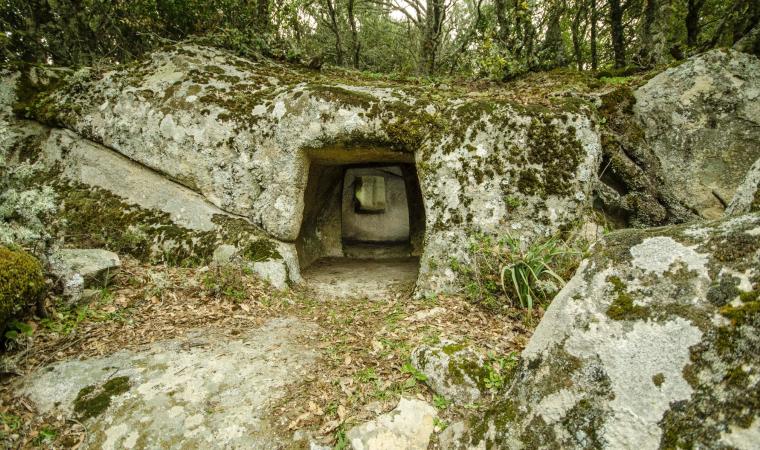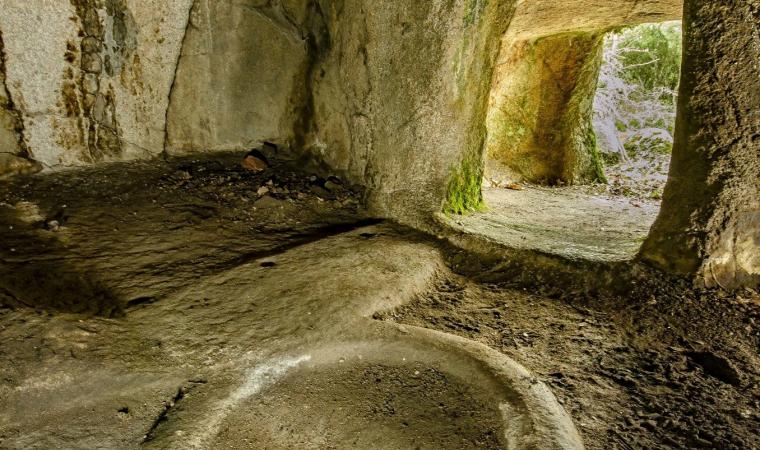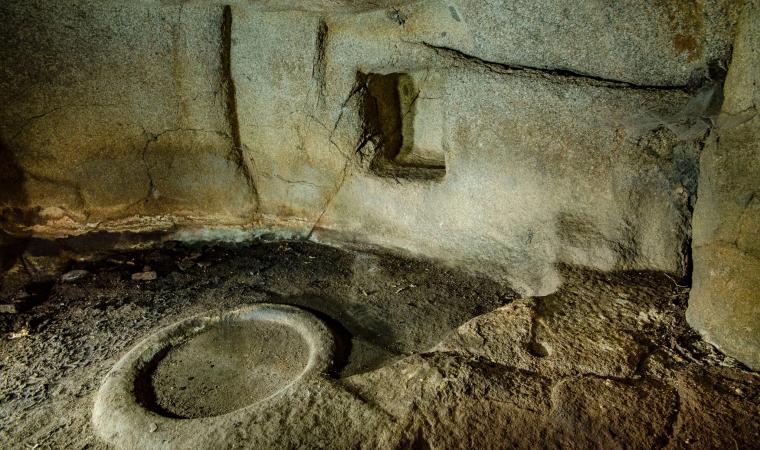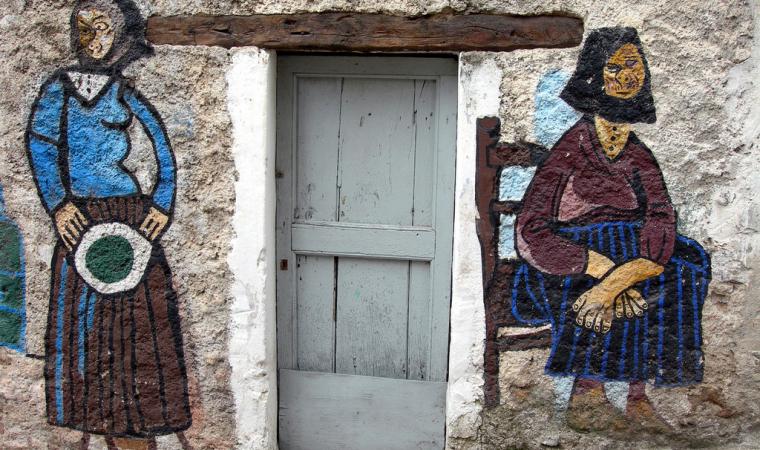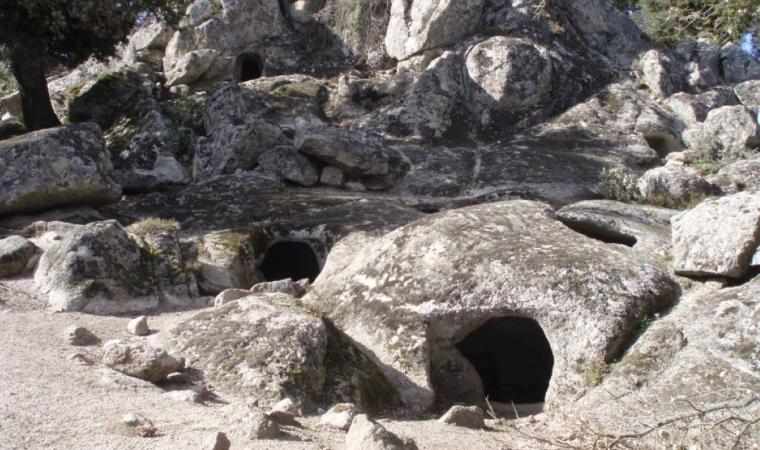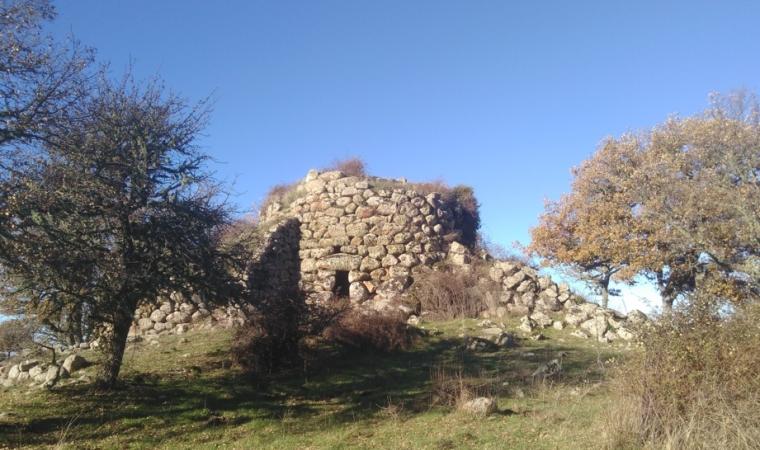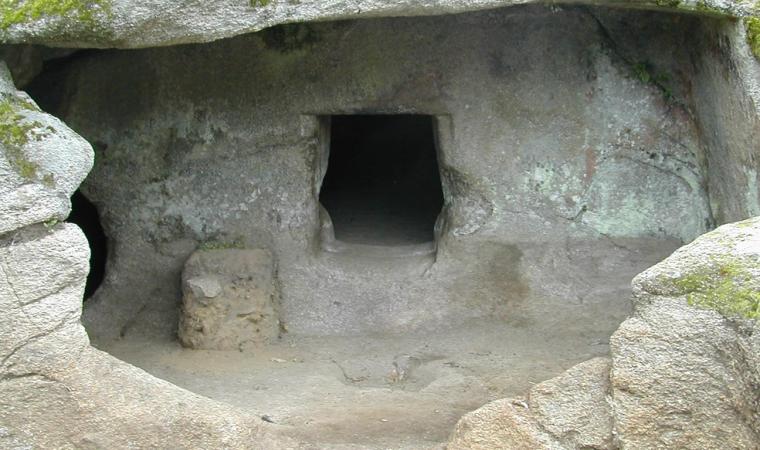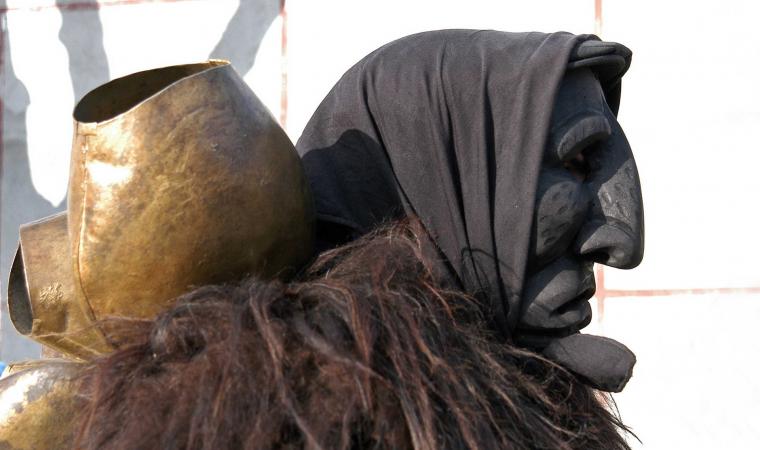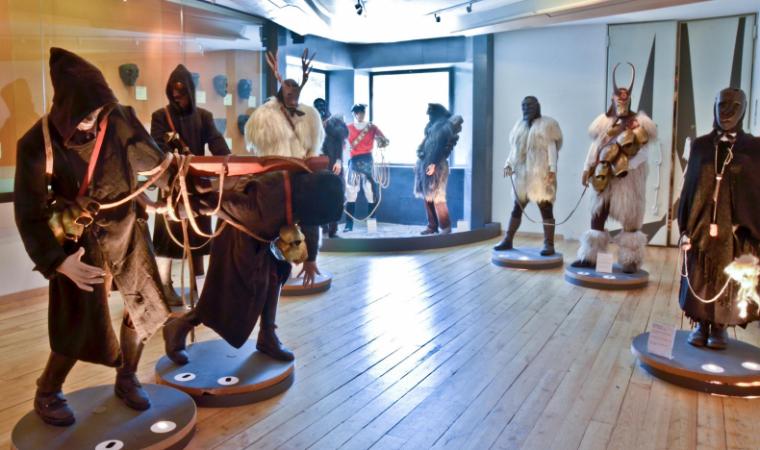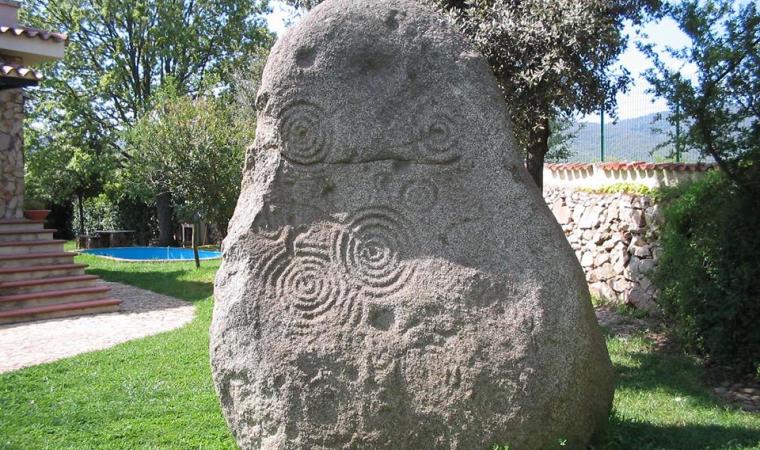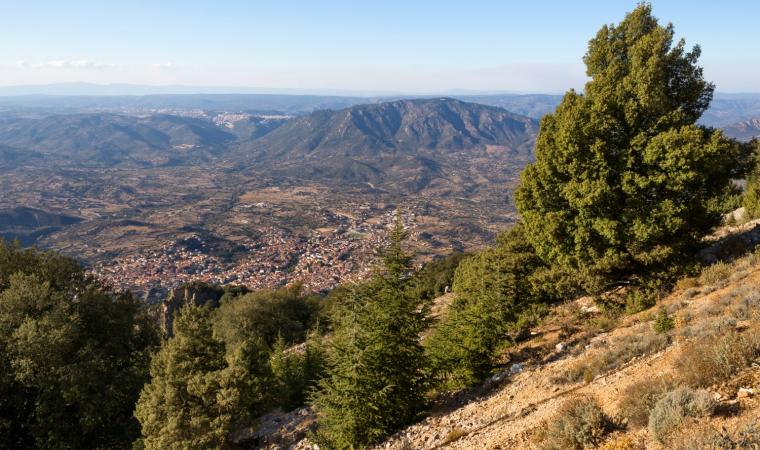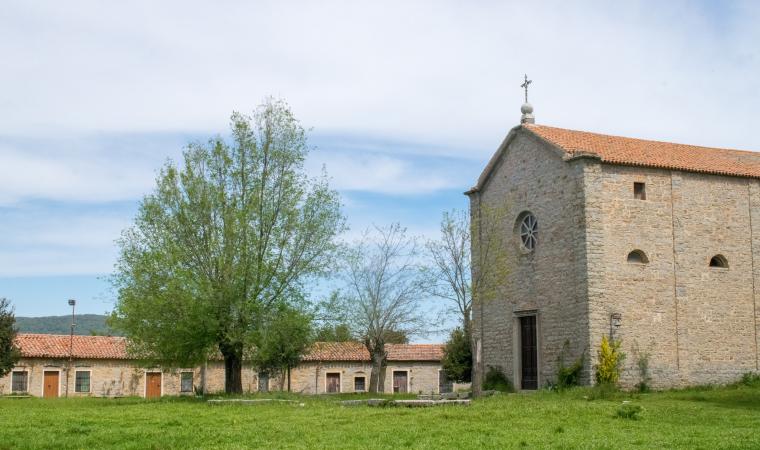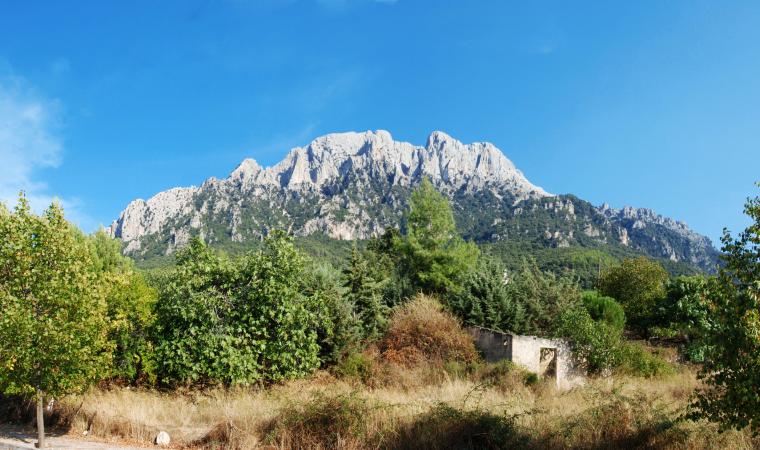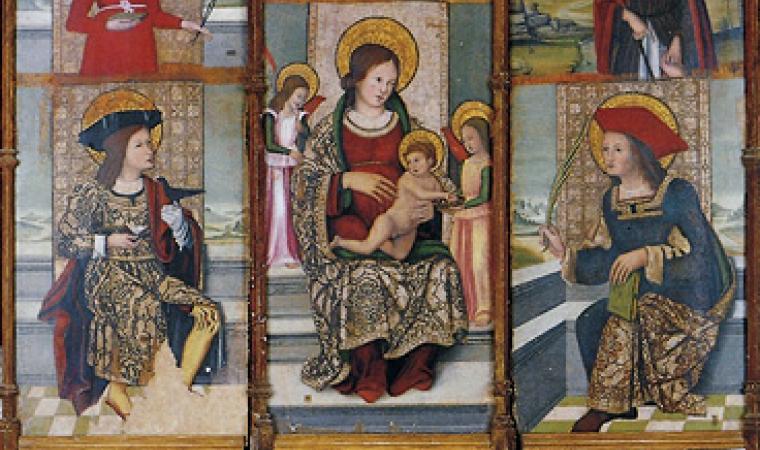As soon as you come across it, set in the greenery of a holm oak forest, you will really think it seems like a house populated by fairies. The Domus de Janas of sa Lhopasa is located five kilometres from the village of Orgosolo, dug into a spur of granite rock and consisting of two rooms, the anteroom and the main cell. You can go into the tomb through a trapezoidal entrance, which leads to a quadrangular room. Traces of red ochre paint still remain on the side walls, under the ceiling. In the one on the left, there is also a bas-relief, perhaps belonging to a pilaster strip that was later destroyed. The main room, with a rectangular layout and a height greater than its depth, is on the opposite side to the entrance. You will notice that the walls and ceiling seem more finished in some places than in others, where they seem barely rough-hewn: it’s possible that the decoration of the domus was never completed.
The most surprising element of the cell is the circular hearth in the centre of the floor. It has a listel with rounded edges and boasts an unusual feature: it merges with a sort of platform saved on the rock, on which four cupules with a diameter of a few centimetres have been created. On the back wall, along with further traces of red paint, you will see a rectangular niche. A baetylic semi-pillar appears inside it, made as a bas-relief, most likely linked to the sacred and religious function of the room. For some, it represents a male symbol linked to reproduction and rebirth, in contrast with the funereal nature of the place.
The first three and a half kilometres of the route to sa Lhopasa coincides with a stretch of road that has become a devotional path leading to a heartfelt pilgrimage destination over time. In fact, the place of martyrdom of the blessed Antonia Mesina, who defended her chastity to the death and also became a symbol against wickedness and abuse, is located in Ovadduthai. An ever-increasing number of visitors pay homage to the very young martyr, taking the opportunity to admire the famous murals that embellish the village streets and then explore the natural and archaeological beauty of the Supramonte of Orgosolo. The climb to the panoramic Monte Novo San Giovanni is captivating and not excessively tiring. Equally enchanting are the sinkhole of su Suercone, the canyon of Gorropu, one of the deepest in Europe, and the forest of Montes, within which the ‘white’ nuraghe Mereu lies.


